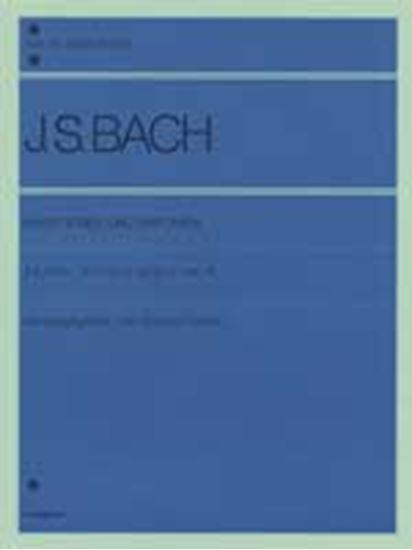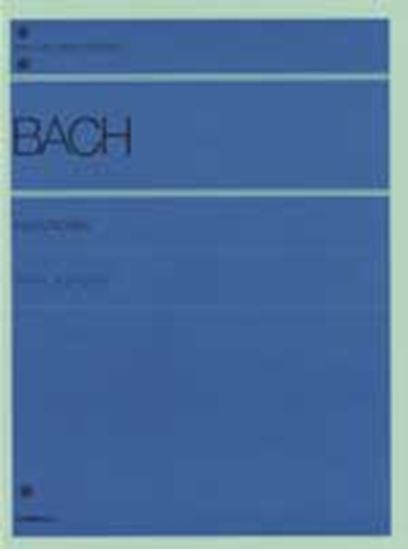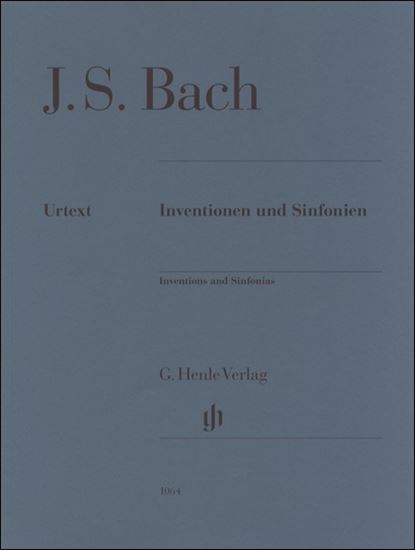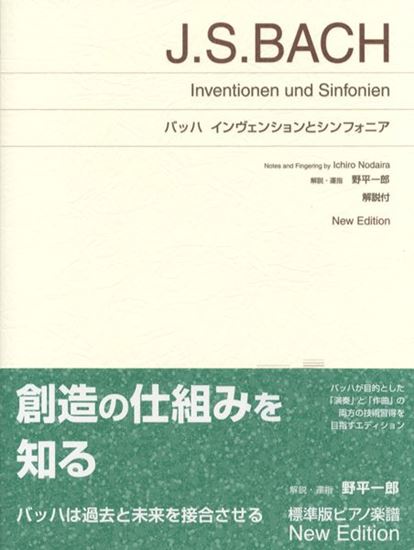Bach, Johann Sebastian : Sinfonia Nr.14 B-Dur BWV 800
Work Overview
Genre:pieces
Total Playing Time:1 min 30 sec
Copyright:Public Domain
Commentary (3)
Author : Takamatsu, Yusuke
Last Updated: September 18, 2020
[Open]
Author : Takamatsu, Yusuke
B-flat major, 4/4 time.
Written in a fugato style, the piece consists of a first half (first exposition: from m. 1; second exposition: from m. 7) and a second half (third exposition: from m. 12; fourth exposition: from m. 15).
A characteristic feature of this piece is the frequent use of stretto. Stretto refers to a technique where the next subject enters before the previous one is completed, creating an overlap. It can already be observed in measures 3 and 6, where the lower voice enters in a cascading manner against the upper voice. While these instances occur in the episodes, stretto of the subject itself is found in the latter half.
In the latter half, the middle voice forms a stretto against the upper voice, first delayed by one beat from m. 12, and then by a half beat from m. 17. From m. 20, which marks the final subject statement, all three voices (middle voice → upper voice → lower voice) present the subject in stretto, forming the climax of the piece.
Author : Hayashikawa, Takashi
Last Updated: March 15, 2018
[Open]
Author : Hayashikawa, Takashi
The theme often appears with its entrance varied. The melody that emerges in the middle voice from the downbeat of beat 4 in measure 17, and the melody that emerges in the lower voice from the upbeat of beat 4 in the same measure, are significantly transformed versions of the theme.
Score examples courtesy of: Bärenreiter Verlag
Author : Ooi, Kazurou
Last Updated: March 12, 2018
[Open]
Author : Ooi, Kazurou
Sinfonia No. 14 in B-flat Major
This Sinfonia can be considered the most challenging among the 15 in terms of pedaling. The pedaling in this Sinfonia is indeed very demanding. Of course, the difficulty of pedaling varies with tempo, but when examining this B-flat major Sinfonia, and referencing other B-flat major works by Bach, the tempo itself does not seem to be particularly fast. I believe an Andantino or Andante tempo, or even slower, would be appropriate. Naturally, this is subjective, and performers are free to set their own tempo. However, let us proceed with the assumption that it moves at a relatively leisurely pace (the author perceives the quarter note at around 40 bpm).
The author is currently referring to the Henle edition, which, for example, indicates the fingering for the soprano voice in measure 5 as 4-5, 4-5, 4-5 for each beat. This suggests that the person who notated these fingerings also considered a tempo that allows for the flexibility to change from finger 4 to 5.
When practicing this Sinfonia, the performer's primary concern should be the fingering. The fingering 4-5, 4-5, 4-5 in measure 5 is impractical for the author. While not entirely impossible, it is quite strenuous. Therefore, the author would play the soprano voice in this measure using only finger 5.
The soprano voice is played with only finger 5 each time the note changes. Of course, this would result in a break, so it is connected using an "instantaneous pedal," as is customary.
While there are sections where one must adapt flexibly, presuming reliance on the pedal, conversely, there are also sections where it is desirable to connect notes solely with the fingers. For instance, consider the right hand in measure 14. The fingerings for both the soprano and alto voices from beat 2 to beat 3 are as follows:
- Beat 2: Soprano 4, Alto 1-3-2-1
- Beat 3: Soprano 5-3-5, Alto 2-1
The technical highlight is in beat 3. The soprano's 5-3-5 should be executed quickly, and simultaneously, the alto's 2-1 should also be performed swiftly.
Performers should utilize all means at their disposal—such as finger pedaling, finger substitution, conventional pedaling, sliding the same finger from a black key to a white key, etc.—to determine the fingerings, striving to "minimize pedal usage as much as possible" and avoid blurring of the sixteenth notes. This is a crucial hint for this Sinfonia.
PTNA & Partner Channel Videos(2items)
Sheet MusicView More
Scores List (42)

カワイ出版

(株)ヤマハミュージックエンタテインメントホールディングス

(株)全音楽譜出版社

(株)全音楽譜出版社

(株)ドレミ楽譜出版社

(株)音楽之友社

(株)全音楽譜出版社

(株)音楽之友社

(株)音楽之友社

(株)ドレミ楽譜出版社

(株)ドレミ楽譜出版社

(株)ドレミ楽譜出版社

(株)ドレミ楽譜出版社

ヘンレー

ヘンレー

カワイ出版

(株)渓水社

(株)音楽之友社

(株)全音楽譜出版社

(株)エー・ティ・エヌ

(株)全音楽譜出版社

カワイ出版

(株)音楽之友社

(株)音楽之友社

ヘンレー

ヘンレー

(株)学研プラス

















